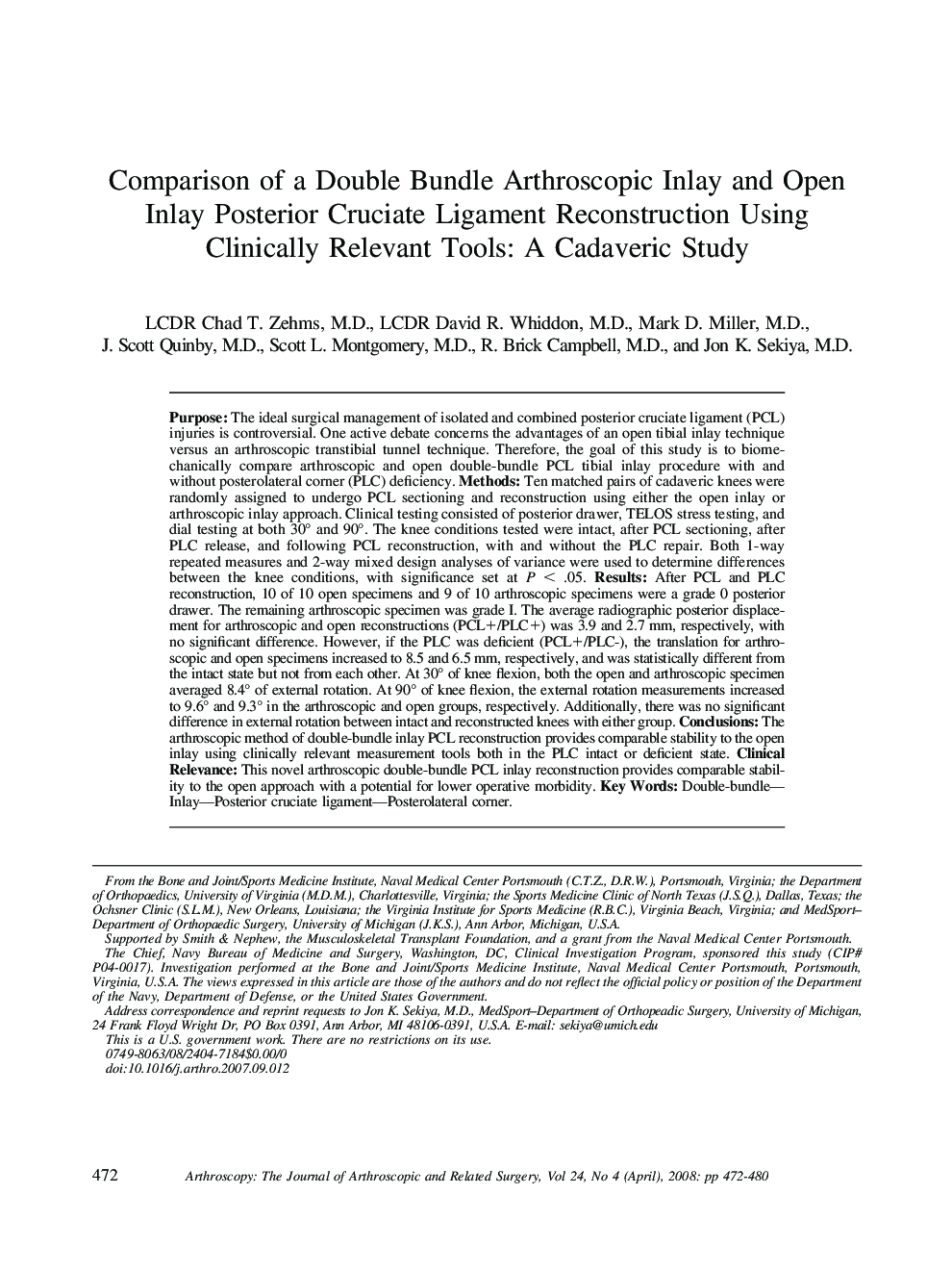| کد مقاله | کد نشریه | سال انتشار | مقاله انگلیسی | نسخه تمام متن |
|---|---|---|---|---|
| 4047035 | 1603586 | 2008 | 9 صفحه PDF | دانلود رایگان |

Purpose: The ideal surgical management of isolated and combined posterior cruciate ligament (PCL) injuries is controversial. One active debate concerns the advantages of an open tibial inlay technique versus an arthroscopic transtibial tunnel technique. Therefore, the goal of this study is to biomechanically compare arthroscopic and open double-bundle PCL tibial inlay procedure with and without posterolateral corner (PLC) deficiency. Methods: Ten matched pairs of cadaveric knees were randomly assigned to undergo PCL sectioning and reconstruction using either the open inlay or arthroscopic inlay approach. Clinical testing consisted of posterior drawer, TELOS stress testing, and dial testing at both 30° and 90°. The knee conditions tested were intact, after PCL sectioning, after PLC release, and following PCL reconstruction, with and without the PLC repair. Both 1-way repeated measures and 2-way mixed design analyses of variance were used to determine differences between the knee conditions, with significance set at P < .05. Results: After PCL and PLC reconstruction, 10 of 10 open specimens and 9 of 10 arthroscopic specimens were a grade 0 posterior drawer. The remaining arthroscopic specimen was grade I. The average radiographic posterior displacement for arthroscopic and open reconstructions (PCL+/PLC+) was 3.9 and 2.7 mm, respectively, with no significant difference. However, if the PLC was deficient (PCL+/PLC-), the translation for arthroscopic and open specimens increased to 8.5 and 6.5 mm, respectively, and was statistically different from the intact state but not from each other. At 30° of knee flexion, both the open and arthroscopic specimen averaged 8.4° of external rotation. At 90° of knee flexion, the external rotation measurements increased to 9.6° and 9.3° in the arthroscopic and open groups, respectively. Additionally, there was no significant difference in external rotation between intact and reconstructed knees with either group. Conclusions: The arthroscopic method of double-bundle inlay PCL reconstruction provides comparable stability to the open inlay using clinically relevant measurement tools both in the PLC intact or deficient state. Clinical Relevance: This novel arthroscopic double-bundle PCL inlay reconstruction provides comparable stability to the open approach with a potential for lower operative morbidity.
Journal: Arthroscopy: The Journal of Arthroscopic & Related Surgery - Volume 24, Issue 4, April 2008, Pages 472–480